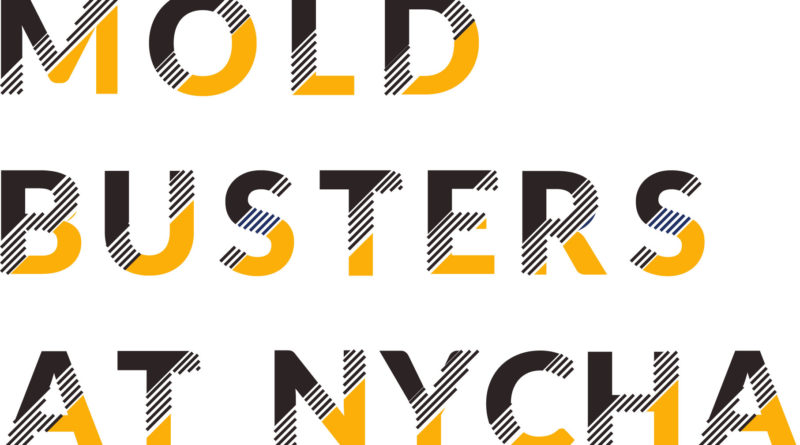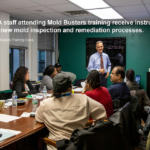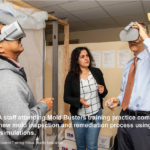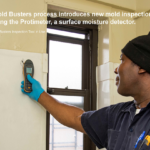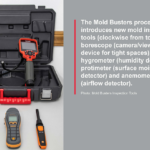NYCHA Completes Mold Busters Rollout Authority-wide
NYCHA recently revised its standard procedure for addressing mold complaints and launched Mold Busters, a program to effectively and efficiently remediate mold. All developments have now implemented Mold Busters, following a citywide rollout that began in January. As part of the rollout, a total of nearly 3,000 staff are getting Mold Busters training.
In addition to staff training, Mold Busters involves new tools, more accountability, a faster timeline for completion of repairs and remediation, and follow-up inspections after work is done to ensure there has been no recurrence of mold.
“I am very proud of the mold training program we created,” said Marvin Jean-Jacques, Mold Administrator at NYCHA. “We’ve also established a brand-new field training program that enhances and reinforces the initial classroom training by coaching staff step-by-step as they conduct Mold Initial Inspections at their developments. Tools like our Site Observation Report allow us to identify challenges and then provide guidance and corrective action onsite to make certain our inspectors can adhere to the procedure. I believe this training program is an integral step in resolving our existing mold complaints and preventing them from reoccurring.”
The comprehensive training program includes a one-day Remediation class, which teaches the guidelines and requirements for how to safely and effectively clean mold; a two-day Building Science class; and a three-day Mold Inspection class. The hands-on training also includes virtual reality technology, where trainees get to walk through the steps of the standard procedure for remediating mold.
The classes are taught by Environmental Education Associates (EEA), one of NYCHA’s training partners, and the virtual reality technology comes from another training partner, NextWave Safety Solutions.
Charles Starks, Assistant Superintendent at Queensbridge Houses North, and Julio Figueroa, Assistant Superintendent at Queensbridge Houses South, joined a group of their colleagues for the week-long Mold Busters training.
“We learned a lot,” said Mr. Starks. “The training goes into the root causes of mold, which steps to take first, like looking for moisture, and the proper procedures to handle mold, so we don’t have to go back to a unit two or three times. I learned more and different ways to handle mold. I was handling my mold work tickets before, but now I can handle them even better.”
Mr. Figueroa agreed: “It was a very informative class for people in different positions on how to remediate mold, so we can get rid of it forever.”
Both Assistant Superintendents were impressed by the new tools that help with mold inspection. Mr. Figueroa said: “The anemometer, hygrometer, these instruments are wonderful because you can check the moisture, check humidity, and check airflow, and now you can actually detect what walls are wet, what walls are dry, and you can tell where the leak is coming from instead of guessing or having to break walls unnecessarily. These tools will definitely help with the timeframe of the work.”

